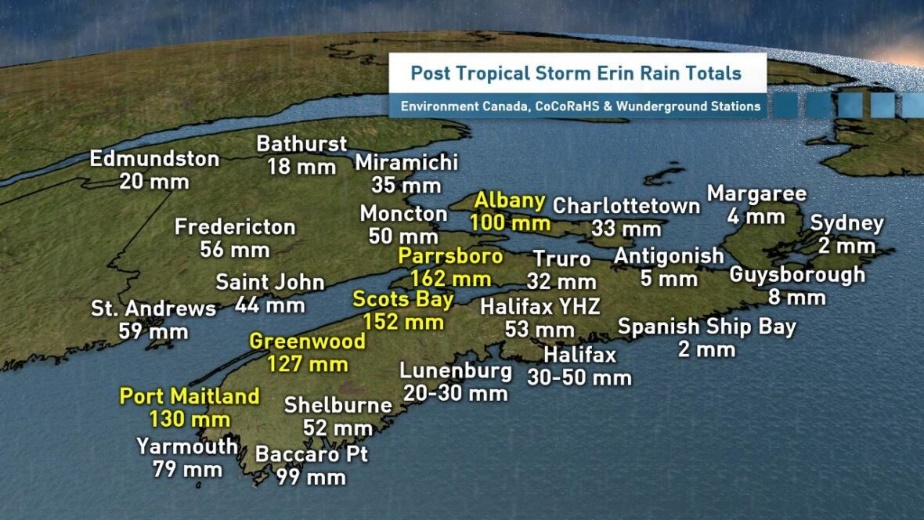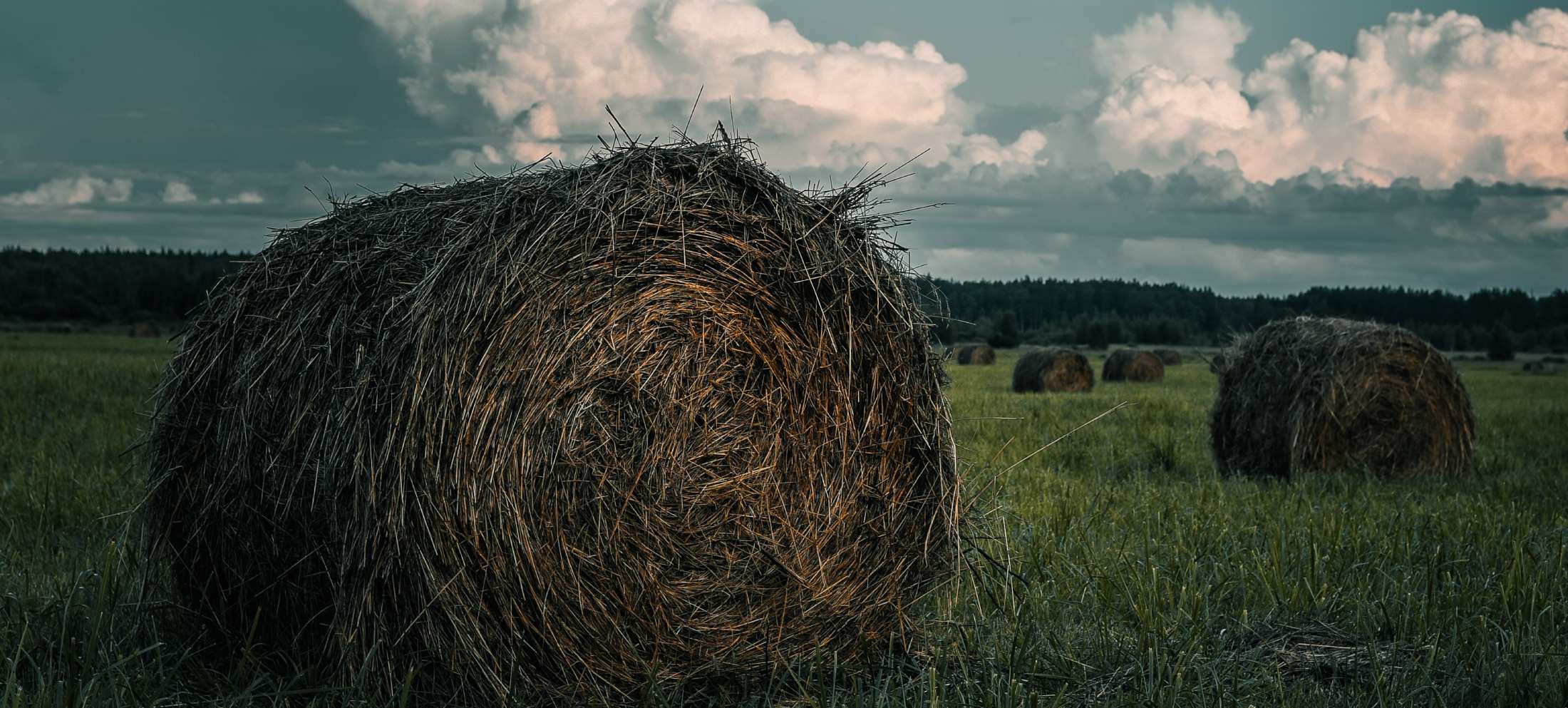Our climate is changing and that is having an impact on our growing seasons. This summer has been hot, humid and mostly dry with repeated heat warnings being issued and threats of thundershowers common in weather forecasts.

It’s hard to know what will be in store for the rest of the season, but tropical storms and hurricanes could be around the corner. Last year, as everyone remembers, hurricane Dorian ripped through the province and caused unprecedented damage. That devastation was on the heels of Post Tropical Storm Erin that dumped over 100 mm of rain from the Yarmouth area to Parrsboro (162 mm). In comparison, Antigonish got 5 mm (Figure 1). Every farmer knows we are at the mercy of Mother Nature and things can change quickly. Although there is very little defense for devastating winds in a hurricane, there are a number of things farmers can do to be better prepared for heavy rainfall events at any point during the season.
In the field
In a “normal” rainfall event, raindrops range in size from 1 to 7 millimeters in diameter and can hit the ground at speeds over 30 km/hr. As a single drop, that isn’t a big deal, but millions of raindrops hitting the bare soil surface can dislodge soil particles splashing them 3 to 5 feet away. This action breaks up soil aggregates, clogs soil pores reducing infiltration and increases runoff and erosion. Just slowing the raindrop down before it hits the ground is one of the easiest ways to reduce the impact of the raindrops. Crop residue, cover crops and maintaining areas in permanent vegetation are all means of slowing down the rain. No-till or reduced tillage can also help as the remaining stubble provides a surface for the raindrop to contact before it hits the soil and will absorb some of the raindrop’s energy and slow it down, reducing the impact.
In the farm yard
Farm yard run-off control is important throughout the year, but especially in the fall (before the ground freezes) and in the spring (as the ground is thawing). If possible, consider how precipitation runoff is to be managed at the planning stage of the manure storage, livestock yard or feed storage area. Earthwork and materials (e.g. concrete, fill, gravel, geotextiles required for drainage) can add a significant expense to construction, but these costs will generally be lower if incorporated in the design phase as opposed to being installed after the pad or yard is constructed.
Eaves troughs on barns or adjacent storage buildings can direct roof water away from manure storages, livestock yards and other farm structures. This water can outlet away from the storage/livestock area, be redirected to a catch basin with subsurface drainage, or stored in a bulk tank for another farm use, i.e. filling a pesticide sprayer, livestock watering or irrigating a small garden.
Constructed wetlands are engineered to pre-treat various types of agricultural waste water prior to reaching natural watercourses. These systems are designed to mimic the functions that natural wetlands provide such as the sedimentation of suspended particles and the reduction in nutrient levels and bacteria. Various types of agricultural waste water have been shown to be effectively treated by constructed wetlands including run-off from manure storages and livestock yards, milk house wash water, tile drainage outflow, slaughterhouse wash water, and field surface runoff.
Increasing the resiliency of our farms while reducing our environmental footprint should be a goal that informs our management decisions leading into the future. Taking steps to reduce the impact of heavy rain events can protect soils and reduce run-off. Here are some resources available to assist you in planning and implementing changes;
Cover Crops Decision Tool:
Constructed Wetlands factsheet:
NS Department of Agriculture Soil and Water Sustainability program is open for applications until September 15th. Funding assistance is available for farm-yard run-off control structures



